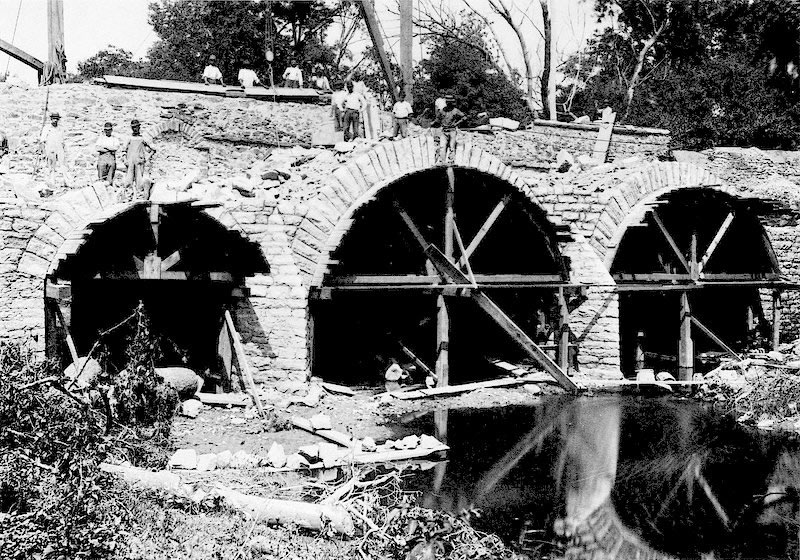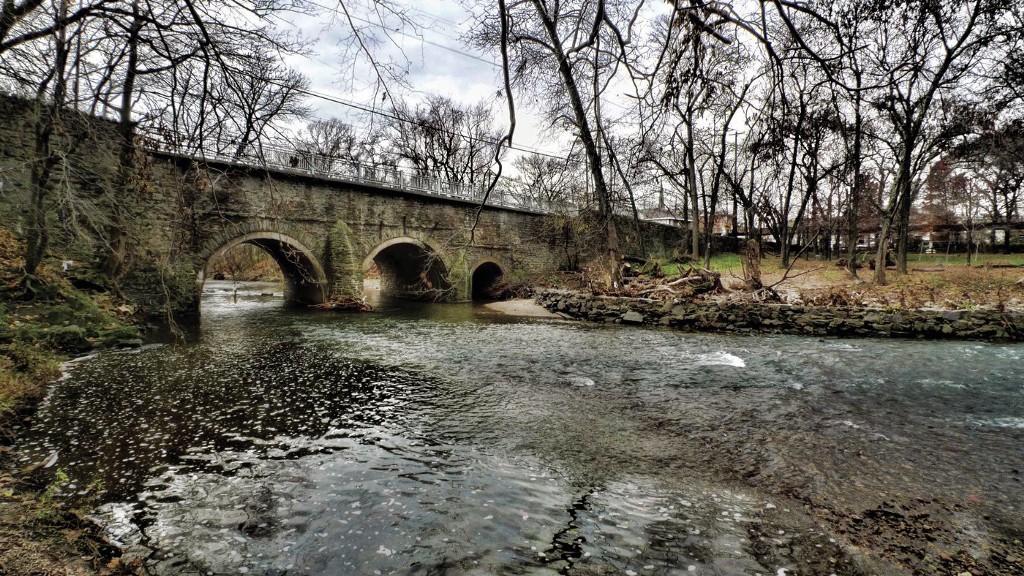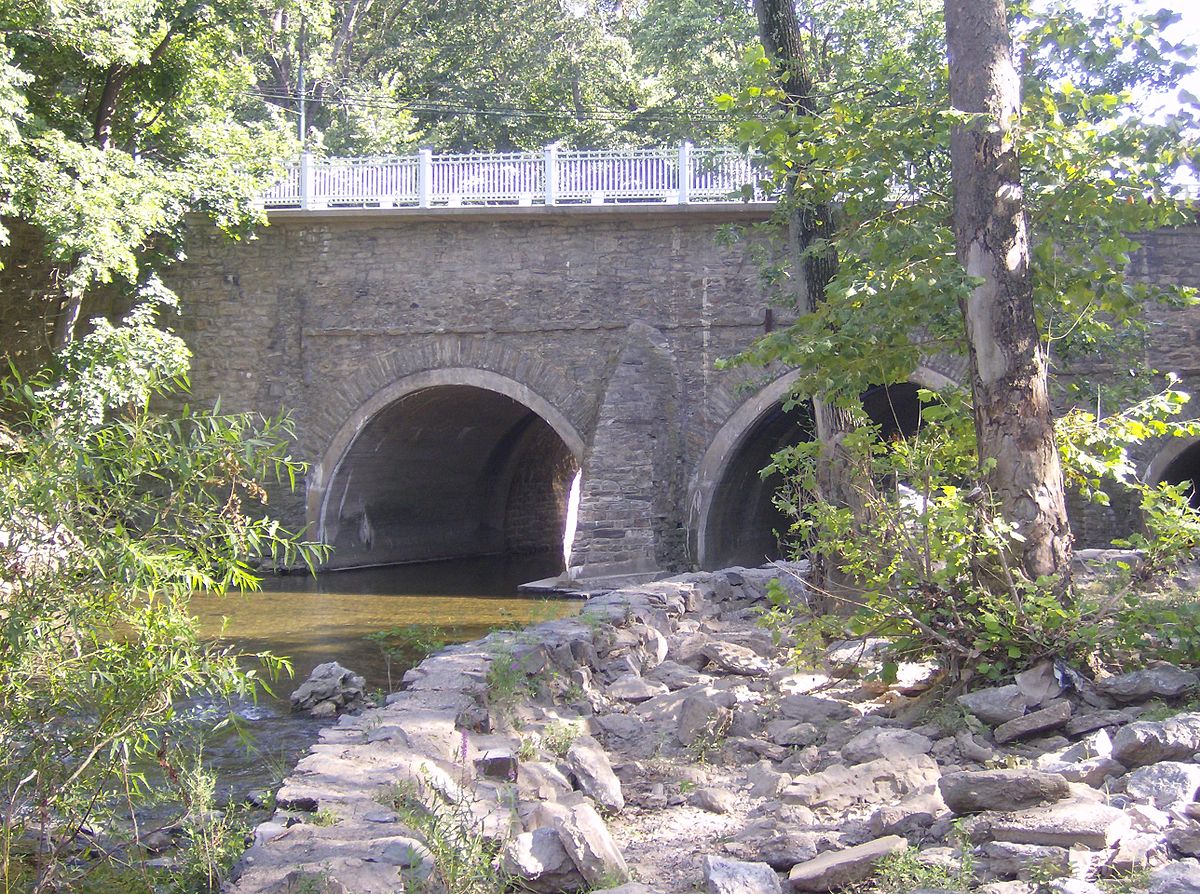The Oldest Stone Arch Bridge in America: The King’s Highway Bridge
The King’s Highway Bridge, also known as the Frankford Avenue Bridge, Pennypack Bridge, Holmesburg Bridge, and King’s Highway Bridge, holds the distinction of being the oldest surviving roadway bridge in the United States. Located in the Holmesburg section of Northeast Philadelphia, Pennsylvania, this historic bridge has stood the test of time for over three centuries. With its impressive stone arch construction and rich history, the King’s Highway Bridge is a true engineering marvel.

A Bridge Born out of Necessity
The construction of the King’s Highway Bridge can be traced back to the late 17th century. William Penn, the founder of Pennsylvania, recognized the need for a bridge across Pennypack Creek to connect his mansion with the burgeoning city of Philadelphia. In 1683, Penn appealed to the English Court at Upland, requesting the construction of this vital link on the King’s Highway, which connected Philadelphia to other major cities such as New York and Boston.
A Testament to Early American Engineering
Completed in 1697, the King’s Highway Bridge stands as a testament to the ingenuity and craftsmanship of early American engineers. This three-span, 73-foot-long stone arch bridge was a significant achievement for its time. Each male member of the surrounding community was required to contribute either labor or money towards its construction, emphasizing the communal effort that went into building this vital infrastructure .
A Witness to History
Throughout its long history, the King’s Highway Bridge has witnessed and played a part in several significant historical events. In August 1774, John Adams and the Continental Congress crossed the bridge on their way to Philadelphia, setting the stage for the American Revolution. In April 1775, an express rider galloped across the bridge after a five-day journey, bringing news of the Battle of Lexington and the start of the Revolutionary War. In 1789, George Washington himself traversed the bridge en route to his first presidential inauguration in New York City.
Evolution and Adaptation
Over the years, the King’s Highway Bridge has undergone various renovations and adaptations to accommodate the changing needs of transportation. Originally only 18 feet wide, the bridge was widened in 1893 to accommodate trolley traffic and again in 1950 to accommodate automobiles. These modifications ensured that the bridge remained a vital link in the evolving transportation network of Philadelphia and the surrounding region.

Recognition and Preservation
The historical significance and architectural excellence of the King’s Highway Bridge have been widely recognized. In 1970, the American Society of Civil Engineers designated the bridge as a National Historic Civil Engineering Landmark, acknowledging its importance in the field of civil engineering. In 1988, it was listed in the National Register of Historic Places, further cementing its status as a cultural and historical treasure .
Preservation efforts have been instrumental in maintaining the bridge’s integrity and ensuring its continued use. Organizations such as Friends of Pennypack Park have been actively involved in protecting the bridge and the surrounding area. In 1997, the bridge’s 300th anniversary was celebrated with a birthday party, highlighting the enduring legacy of this remarkable structure .
The Bridge Today
Today, the King’s Highway Bridge, also known as the Frankford Avenue Bridge, continues to serve as a vital transportation link. As part of U.S. Route 13, it carries a significant volume of traffic, with an estimated 14,000 vehicles crossing it daily. Despite the passage of time, the bridge remains a symbol of resilience and endurance, connecting communities and facilitating the movement of people and goods.
Rehabilitation and Restoration
To ensure the bridge’s continued viability, the Pennsylvania Department of Transportation (PennDOT) undertook a comprehensive rehabilitation project in 2018. The project included the reconstruction of the north spandrel wall, repointing of stone masonry, and the reconstruction of parapet walls. These efforts aimed to preserve the bridge’s structural integrity and maintain its historical significance for future generations.
The King’s Highway Bridge, also known as the Frankford Avenue Bridge, stands as a testament to the rich history and engineering prowess of early America. With its enduring stone arch construction, it has weathered the test of time, serving as a vital transportation link for over three centuries. As the oldest surviving roadway bridge in the United States, it continues to inspire awe and admiration while connecting communities and preserving the legacy of our nation’s past.
